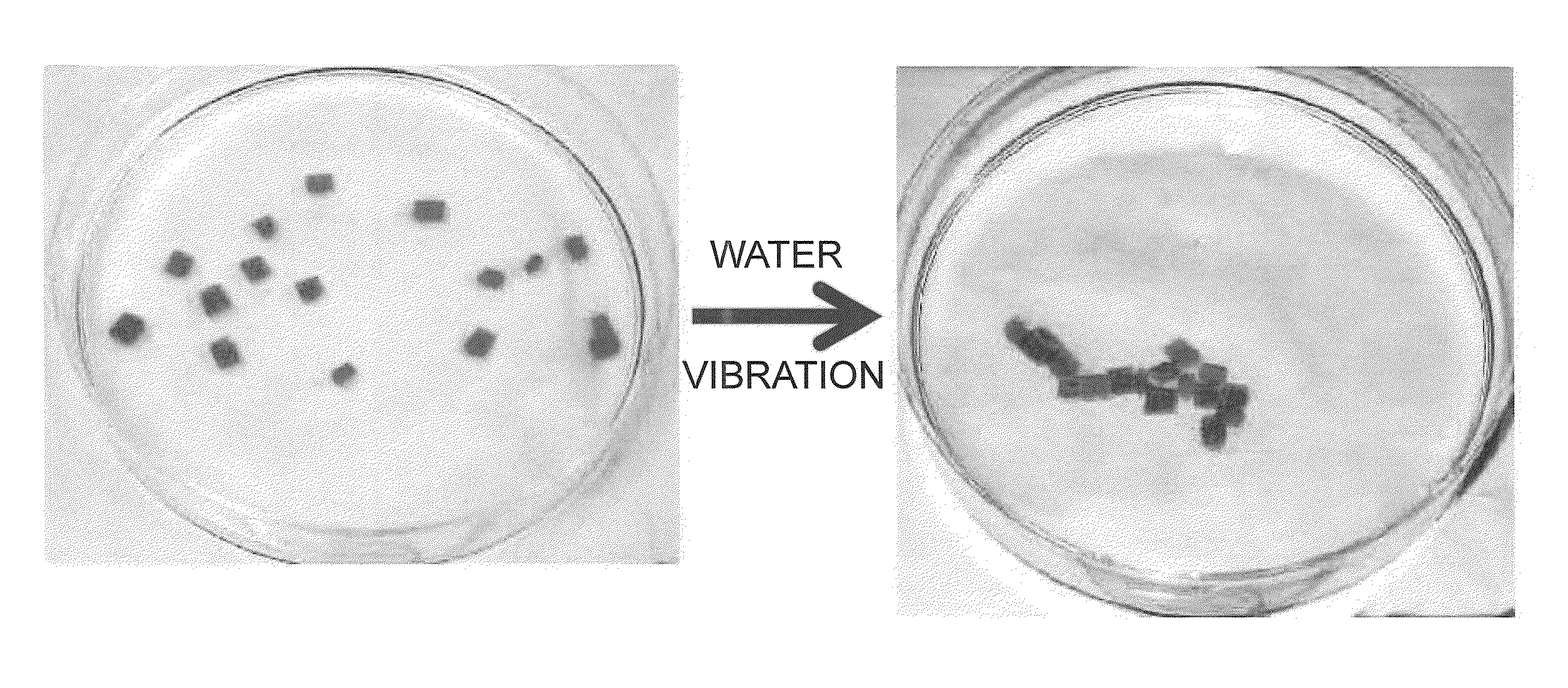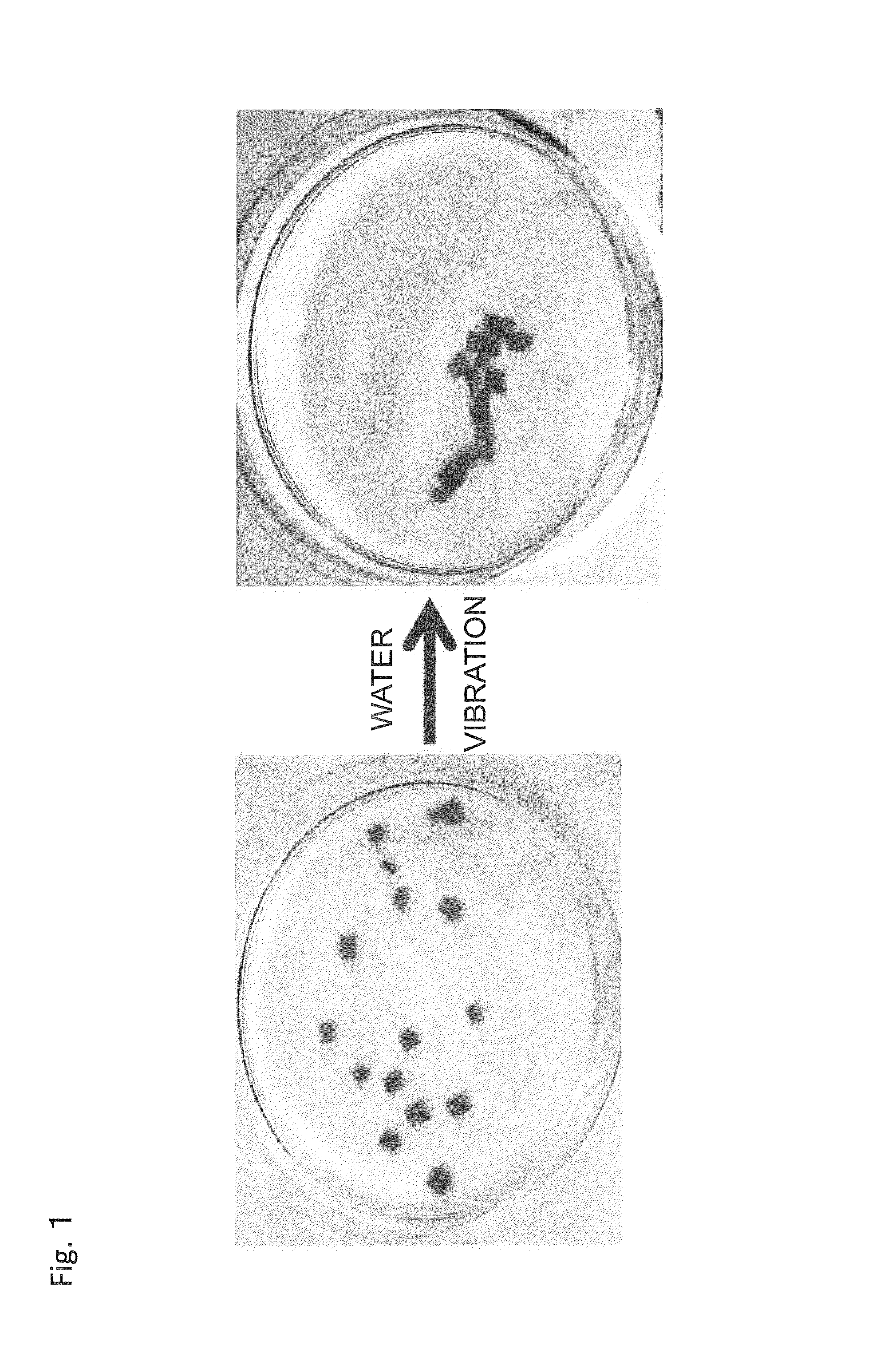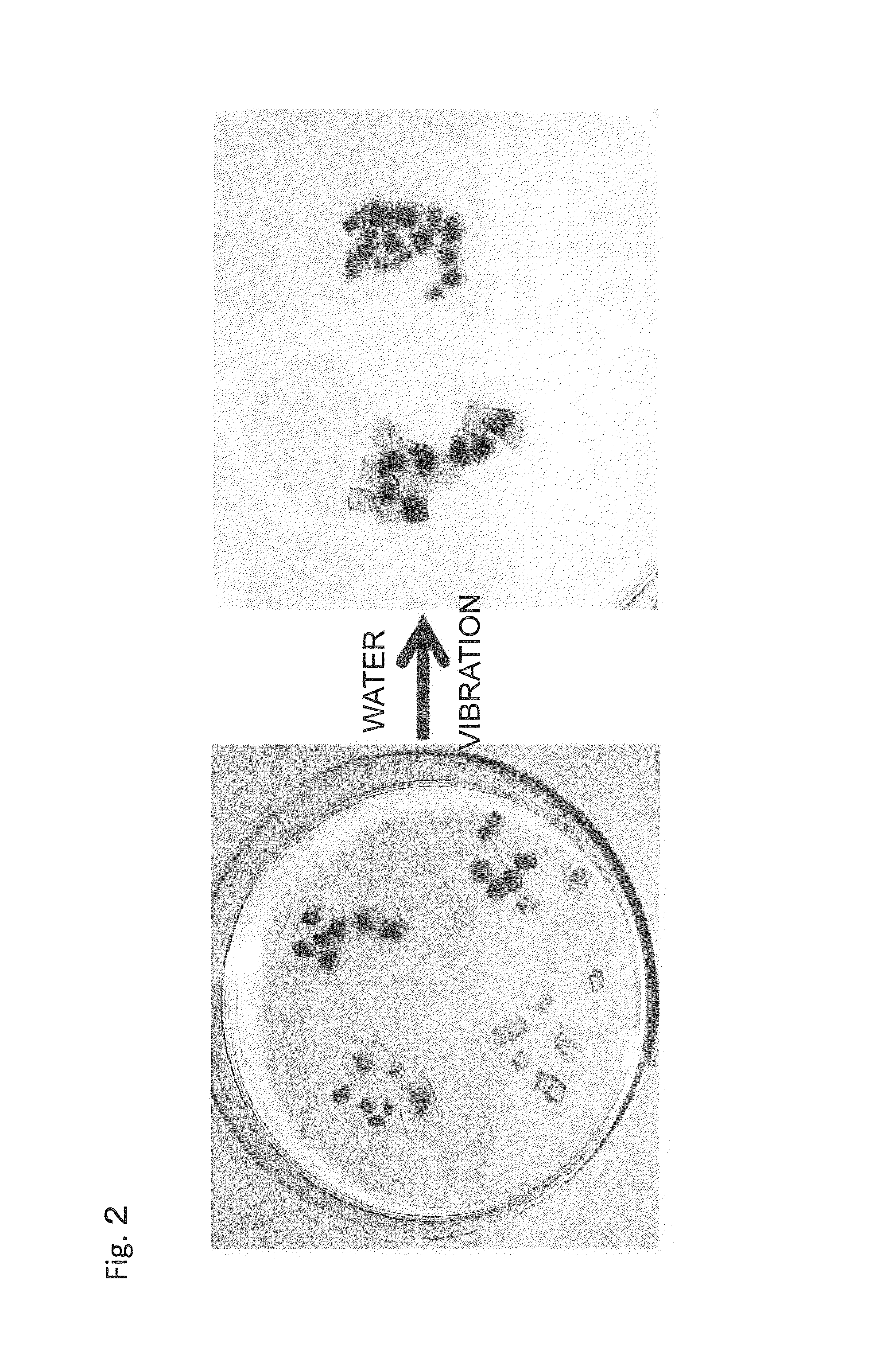Material self-assembly method and selective adhesion method based on molecular recognition
a self-assembly and material technology, applied in the direction of cyclodextrin adhesives, adhesive types, amide/imide polymer adhesives, etc., can solve the problem of not well-studied macro-scale self-assembly (macro-scale self-assembly) and hardly any report of macro-scale self-assembly of materials based on molecular recognition
- Summary
- Abstract
- Description
- Claims
- Application Information
AI Technical Summary
Benefits of technology
Problems solved by technology
Method used
Image
Examples
production example 1
[0117]6-Amino-α-cyclodextrin (0.58 g; 0.60 mmol) was dissolved in a 50-ml NaHCO3 aqueous solution (0.5 g), and the pH of the solution was brought to about 10 with NaOH. Acryloyl chloride (90 μl; 1.2 mmol) was added to the 6-amino-α-cyclodextrin solution on an ice bath, and the mixture was stirred for 6 hours. After the reaction, the mixture was concentrated to about 50% of the total amount, and poured into acetone (500 mL). Thereafter, the precipitate was collected by centrifugation, and dried overnight in a vacuum oven. The resulting crude product was generated by reversed-phase chromatography with HP-20 polystyrene gel (methanol / water) to give 6-acrylamide-α-cyclodextrin (0.49 g; yield: 79%).
[0118]1H-NMR (DMSO-d6): δ8.00 (t, 1H, amido), 6.27 (dd, 1H, olefin), 6.02 (d, 1H, olefin), 5.58-5.34 (d, 1H, olefin, m, 13H, O2, 3H of CD), 4.89-4.74 (m, 6H, C1H of CD), 4.54-4.38 (m, 5H, O6H of CD), 3.84-3.20 (m, overlaps with HOD)
[0119]MALDI-TOF MS; m / z=1025.3 ([C3...
production example 2
6-acrylamide-β-cyclodextrin
[0122]6-Amino-β-cyclodextrin (0.68 g; 0.60 mmol) was dissolved in a 50-ml NaHCO3 aqueous solution (0.5 g), and the pH of the solution was brought to about 10 with NaOH. Acryloyl chloride (90 μl; 1.2 mmol) was added to the 6-amino-β-cyclodextrin solution on an ice bath, and the mixture was stirred for 6 hours. After the reaction, the mixture was concentrated to 10% of the total amount, and poured into acetone (500 mL). Thereafter, the precipitate was collected by centrifugation, and dried overnight in a vacuum oven. The resulting crude product was generated by reversed-phase chromatography with HP-20 polystyrene gel (methanol / water) to give 6-acrylamide-β-cyclodextrin (0.53 g; yield: 74%).
[0123]1H-NMR (DMSO-d6): δ7.90 (t, 1H, amido), 6.27 (dd, 1H, olefin), 6.02 (d, 1H, olefin), 5.90-5.60 (d, 1H, olefin, m, 15H, O2, 3H of CD), 4.89-4.74 (m, 7H, C1H of CD), 4.54-4.38 (m, 6H, O6H of CD), 3.84-3.20 (m, overlaps with HOD)
[0124]MALDI-TOF MS; m / z=1208.0 ([C45H73NO...
production example 3
N-(1-adamantyl)acrylamide
[0127]1-Adamantylamine (0.76 g; 5.0 mmol) and triethylamine (0.77 ml; 5.5 mmol) were dissolved in dry THF (40 mL) on an ice bath. After dropping acryloyl chloride (0.45 ml; 5.5 mmol) onto the solution, the mixture was stirred for 4 hours. After the reaction, the precipitate was removed by filtration, and the supernatant liquid was concentrated under reduced pressure. The resulting crude product was recrystallized from chloroform to give N-(1-adamantyl)acrylamide (0.85 mg; yield: 83%).
[0128]1H-NMR ((CD3)SO): δ6.15 (dd, 1H, olefin), 5.96 (dd, 1H, olefin), 5.56 (dd, 1H, olefin), 5.56 (dd, 1H, olefin), 5.15 (brs, 1H, NH), 2.06 (m, 9H, adamantine), 1.59 (m, 6H, adamantine)
[0129]MALDI-TOF MS; m / z=228.6 ([C13H19NO+Na]+=228.1) [C39H63NO30+K]+=244.4)
[0130]Elemental analysis (C13H19NO(H2O)0.16): C, 74.09; H, 9.24; N, 6.64.
[0131]Measurement result: C, 74.06; H, 9.18; N, 6.61.
Production of Host Body Macromolecule
Polymerization Example 1
[0132]The 6-acrylamide-β-cyclodext...
PUM
| Property | Measurement | Unit |
|---|---|---|
| mol % | aaaaa | aaaaa |
| fracture elongation | aaaaa | aaaaa |
| magnetic interaction | aaaaa | aaaaa |
Abstract
Description
Claims
Application Information
 Login to View More
Login to View More - R&D
- Intellectual Property
- Life Sciences
- Materials
- Tech Scout
- Unparalleled Data Quality
- Higher Quality Content
- 60% Fewer Hallucinations
Browse by: Latest US Patents, China's latest patents, Technical Efficacy Thesaurus, Application Domain, Technology Topic, Popular Technical Reports.
© 2025 PatSnap. All rights reserved.Legal|Privacy policy|Modern Slavery Act Transparency Statement|Sitemap|About US| Contact US: help@patsnap.com



